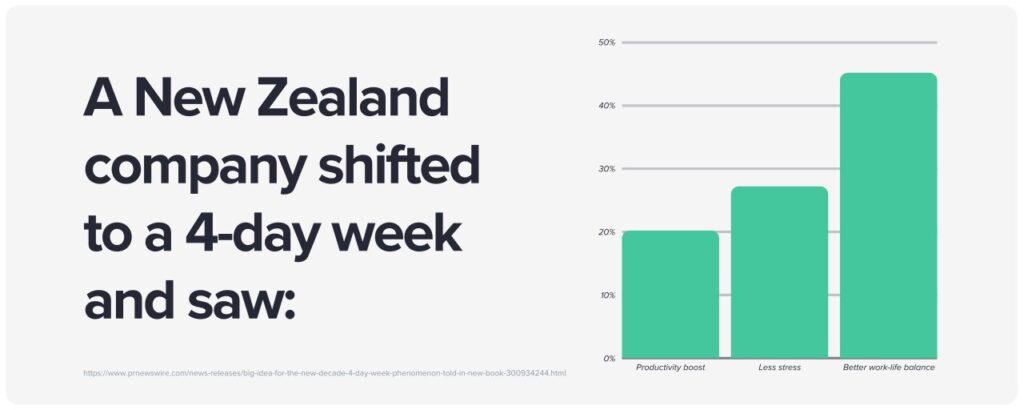The concept of a shorter workweek has been gaining momentum over recent years as companies look towards alternative work schedules to boost productivity and improve employee well-being. With the coronavirus pandemic acting as a catalyst for remote work and flexible arrangements, many employers are exploring the feasibility of a 4-day workweek. This guide will provide an in-depth review of the potential benefits and challenges of a 4-day workweek, along with real-life examples and statistics to help businesses decide if this work arrangement is right for them.
Pros of a 4-Day Workweek
Improved Work-Life Balance:
The promise of a reduced workweek is a significant draw for employees looking to balance their work commitments with personal and family responsibilities. According to a study conducted by the Society for Human Resource Management (SHRM), over two-thirds of employees reported that flexibility in work arrangements was a crucial factor in choosing an employer. A 4-day workweek not only allows employees to have more time for personal commitments but also helps to reduce stress and burnout levels, leading to a happier and more engaged workforce.
Increased Productivity:
Shortening the workweek can have a positive impact on workforce productivity. Researchers at Microsoft Japan found that productivity increased by 40% when employees worked a 4-day week, leading to a reduction in work-related stress and an increase in job satisfaction. A shorter workweek can also lead to better time management and improved focus, resulting in more efficient workload management and higher output.
Health and Well-being Benefits:
A 4-day workweek can have a significant impact on the health and well-being of workers, with less time spent commuting and more time for rest and recuperation. According to a report by the World Economic Forum, individuals who worked over 55 hours per week had a higher risk of stroke and heart disease. Additionally, a flexible approach to working arrangements has been found to reduce instances of presenteeism and absenteeism, which can help companies save costs related to employee health and sick leave.
Positive Environmental Impact:
The potential reduction of commuting hours for those who work remotely or have condensed schedules can lead to lower carbon footprints and reduced consumption. This can have a positive impact on companies and the environment as a whole, aligning with corporate social responsibility.

Cons of a 4-Day Workweek
Extended Workday:
One of the biggest challenges faced by companies when implementing a 4-day workweek is the extended workday required to accommodate the shorter workweek. Some employees may find it difficult to work extended hours, which can have a negative impact on their job satisfaction and overall well-being.
Impact on Companies and Industries:
Industries with tighter schedules or specific coverage needs may struggle to adopt a shorter workweek without impacting customer service or operational workflows. This can ultimately impact the bottom line and create challenges for businesses looking to explore this type of work arrangement.
Difficulty in Implementation:
For some companies, implementing a 4-day workweek may require changes to existing workflow and scheduling systems, leading to potential resistance from employees and management. Additionally, finding an effective schedule that works for both employees and the company can be challenging.
Case Studies and Real-Life Examples:
Successful implementation of 4-day workweeks has been seen across diverse industries. New Zealand-based trust company Perpetual Guardian was able to successfully reduce its workweek for employees from five to four days. The outcome was a 20% increase in productivity and reduced levels of stress and burnout among employees. Similarly, online education company Treehouse implemented a 4-day workweek in 2006, leading to a 40% increase in productivity and a more satisfied workforce.

As seen in this guide, a 4-day workweek has potential benefits and challenges for both employees and employers. It is crucial that companies explore the impact of this type of work arrangement before implementing the change. Companies can obtain feedback from their employees on their preferences, and consider whether the industry and the existing workflows allow for a shorter workweek to be successfully implemented.